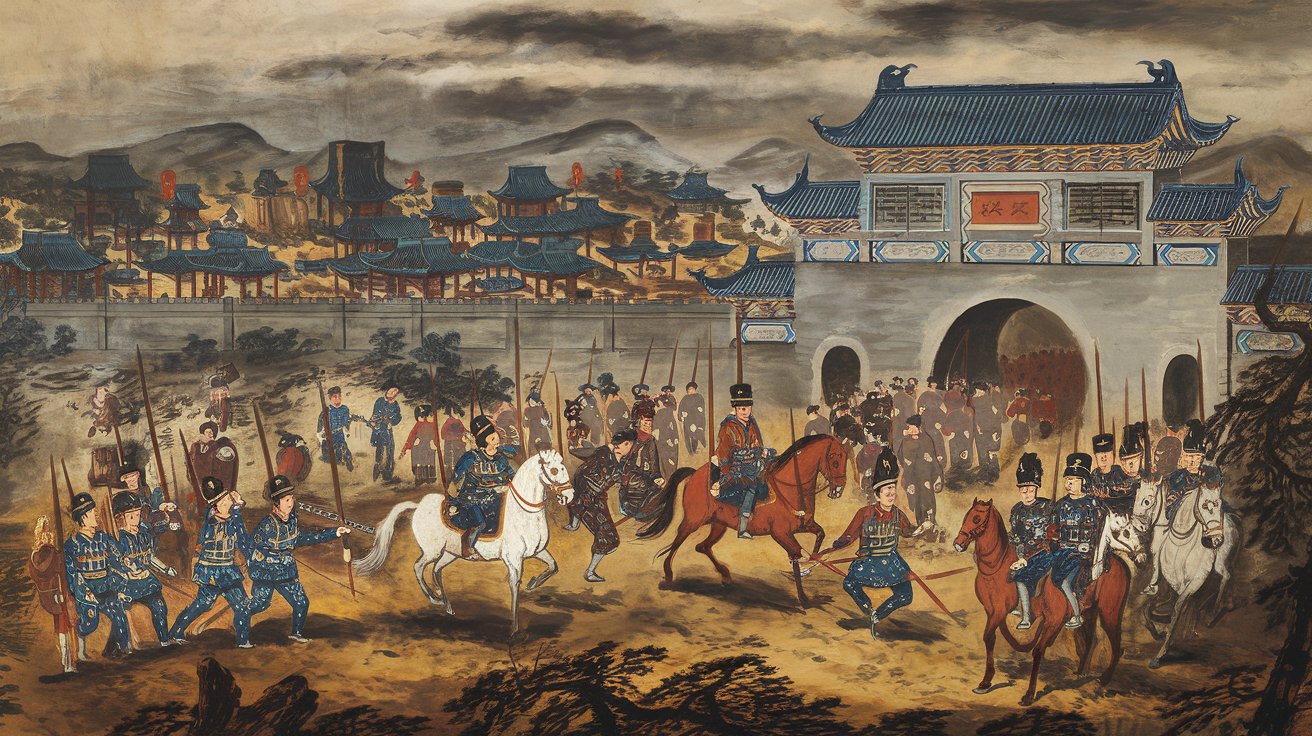
Asian dynasties have shaped history with their rich cultures, powerful rulers, and groundbreaking innovations. From the Great Wall of China to the Taj Mahal, these dynasties left behind legacies that continue to captivate us. Ever wondered how the Ming Dynasty managed to build such an impressive navy? Or how the Mughal Empire influenced modern Indian cuisine? This blog post dives into 30 fascinating facts about these influential dynasties. Whether you're a history buff or just curious, you'll find something intriguing. Get ready to explore the wonders of Asian dynasties and uncover the secrets behind their enduring impact.
Key Takeaways:
- Ancient China was home to powerful dynasties like the Xia, Shang, and Han, which shaped its culture and history. They introduced inventions like paper, the Great Wall, and the Silk Road, influencing the world.
- Japan, Korea, Southeast Asia, and South Asia also had influential dynasties that left lasting legacies in art, science, and governance. From samurais and shoguns to grand empires, these dynasties shaped the rich tapestry of Asian history.
Ancient China: The Cradle of Dynasties
China's history is rich with powerful dynasties that shaped its culture, politics, and society. These dynasties left behind a legacy that continues to influence the world today.
- The Xia Dynasty is often considered the first Chinese dynasty, though its existence is debated among historians.
- The Shang Dynasty (1600-1046 BCE) is known for its advances in bronze work and the development of writing.
- The Zhou Dynasty (1046-256 BCE) introduced the concept of the "Mandate of Heaven," which justified the rule of the king.
- The Qin Dynasty (221-206 BCE) unified China and began the construction of the Great Wall.
- The Han Dynasty (206 BCE-220 CE) saw the invention of paper and the Silk Road's establishment, which connected China to the West.
The Golden Ages: Flourishing Arts and Sciences
Several dynasties are known for their contributions to arts, science, and culture, marking periods of great prosperity and innovation.
- The Tang Dynasty (618-907 CE) is often considered a golden age of Chinese culture, with significant developments in poetry, painting, and ceramics.
- The Song Dynasty (960-1279 CE) saw the invention of gunpowder, the compass, and printing technology.
- The Yuan Dynasty (1271-1368 CE), established by Kublai Khan, expanded China's territory and facilitated cultural exchanges with the West.
- The Ming Dynasty (1368-1644 CE) is famous for its blue and white porcelain and the completion of the Great Wall.
- The Qing Dynasty (1644-1912 CE) was the last imperial dynasty of China, known for its complex bureaucracy and the Opium Wars.
Japan's Feudal Era: Samurai and Shoguns
Japan's history is marked by periods of feudal rule, where powerful families and military leaders held sway over the land.
- The Heian Period (794-1185 CE) is known for its courtly culture and the creation of classic literature like "The Tale of Genji."
- The Kamakura Shogunate (1185-1333 CE) saw the rise of the samurai class and the establishment of a military government.
- The Muromachi Period (1336-1573 CE) was characterized by the influence of Zen Buddhism and the flourishing of the arts.
- The Sengoku Period (1467-1603 CE) was a time of civil war and social upheaval, leading to the unification of Japan under the Tokugawa Shogunate.
- The Edo Period (1603-1868 CE) brought peace and stability, with strict social order and isolationist policies.
Korea's Dynastic Heritage: Kingdoms and Empires
Korea's dynastic history is filled with powerful kingdoms that contributed to the region's cultural and technological advancements.
- The Gojoseon Kingdom (2333-108 BCE) is considered the first Korean kingdom, founded by the legendary Dangun.
- The Three Kingdoms Period (57 BCE-668 CE) saw the rise of Goguryeo, Baekje, and Silla, each contributing to Korean culture and history.
- The Unified Silla (668-935 CE) period marked the unification of the Korean Peninsula and significant cultural development.
- The Goryeo Dynasty (918-1392 CE) is known for its advancements in ceramics, particularly celadon pottery.
- The Joseon Dynasty (1392-1897 CE) established Confucianism as the state ideology and created the Korean alphabet, Hangul.
Southeast Asia: Kingdoms of Diversity
Southeast Asia's dynasties were diverse and influential, each contributing to the region's rich cultural tapestry.
- The Khmer Empire (802-1431 CE) in Cambodia is renowned for constructing Angkor Wat, one of the world's largest religious monuments.
- The Srivijaya Empire (7th-13th centuries) in Indonesia was a major center of Buddhist learning and maritime trade.
- The Majapahit Empire (1293-1527 CE) in Indonesia unified much of Southeast Asia and promoted Hindu-Buddhist culture.
- The Ayutthaya Kingdom (1351-1767 CE) in Thailand was a major trading hub and known for its grand architecture.
- The Nguyễn Dynasty (1802-1945 CE) in Vietnam was the last ruling dynasty, known for its resistance against French colonialism.
South Asia: Empires of Grandeur
South Asia's dynasties were marked by grand empires that left lasting legacies in architecture, culture, and governance.
- The Maurya Empire (322-185 BCE) in India, under Ashoka, spread Buddhism and established a vast network of roads.
- The Gupta Empire (320-550 CE) is often referred to as the Golden Age of India, with significant achievements in science, mathematics, and art.
- The Chola Dynasty (9th-13th centuries) in Southern India was known for its naval dominance and temple architecture.
- The Mughal Empire (1526-1857 CE) in India is famous for its monumental architecture, including the Taj Mahal.
- The Maratha Empire (1674-1818 CE) in India challenged Mughal rule and laid the foundation for modern Indian nationalism.
Final Glimpse at Asian Dynasties
Asian dynasties shaped history with their rich cultures, powerful rulers, and groundbreaking innovations. From the Great Wall of China to the Mughal architecture in India, these empires left a lasting legacy. They influenced art, science, and politics, creating a tapestry of achievements that still resonate today. Understanding these dynasties helps us appreciate the complexities of our past and the advancements that came from these regions. Their stories remind us of human resilience, creativity, and the quest for knowledge. By learning about these dynasties, we gain insights into the foundations of modern society. Their contributions continue to inspire and educate, proving that history is not just a series of events but a continuous journey of human endeavor. Dive deeper into these fascinating histories, and you'll find a world of wonder and wisdom waiting to be explored.
Frequently Asked Questions
Was this page helpful?
Our commitment to delivering trustworthy and engaging content is at the heart of what we do. Each fact on our site is contributed by real users like you, bringing a wealth of diverse insights and information. To ensure the highest standards of accuracy and reliability, our dedicated editors meticulously review each submission. This process guarantees that the facts we share are not only fascinating but also credible. Trust in our commitment to quality and authenticity as you explore and learn with us.


